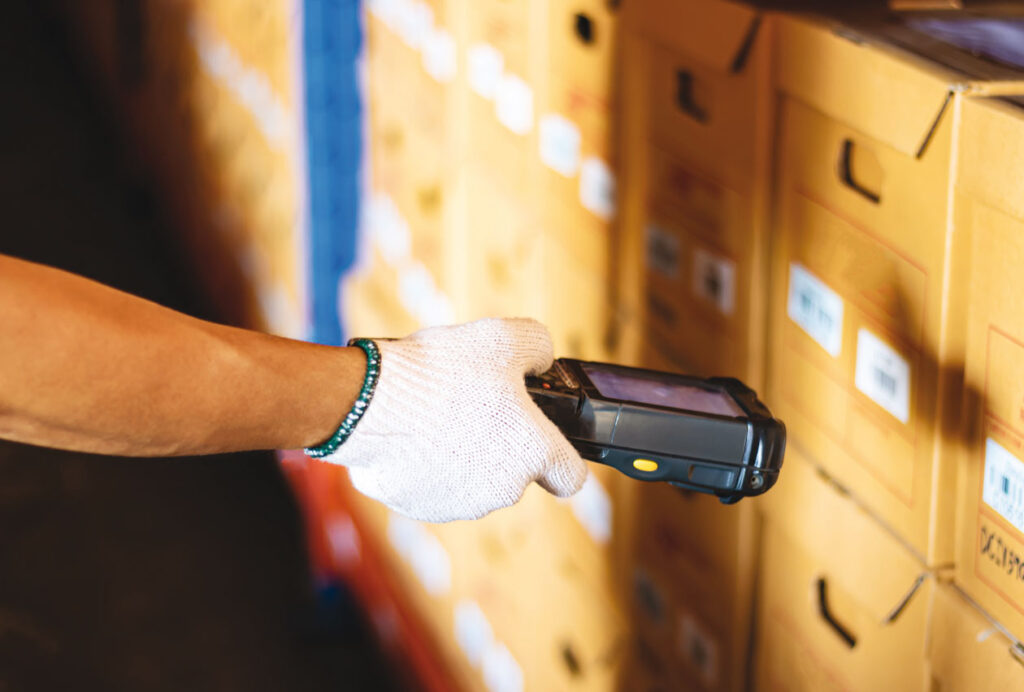Boosting Warehouse Efficiency Through Labeling

Conventional barcodes require workers to be next to items to scan them. Switching to radio frequency identification tags with longer read distances let workers check labels without climbing racks. © kaweewat – stock.adobe.com
By: Jane Marsh, Contributor
Warehouses today face increasing pressure to become more efficient. E-commerce and global supply chain disruptions drive demand to unprecedented levels, yet many facilities still need to rely on slow, heavily manual workflows. Thankfully, there are many potential solutions — improving labeling systems is one of the most straightforward.
Many warehouse efficiency improvements involve expensive technologies or entirely restructured workflows. While these changes can yield significant benefits, smaller and simpler fixes can offer necessary enhancements, too. Here is how warehouses can boost their efficiency through labeling.
Increasing Scanning Range
Rising shipping volumes have driven many warehouses to embrace dense, high-capacity racking systems. These high-density storage solutions offer important flexibility advantages but can also make scanning package labels on higher racks difficult. Long-range scanning technologies provide a solution.
Conventional barcodes require workers to be next to items to scan them, but the average radio frequency identification tag has read distances of 20 feet or more. Switching to these more advanced systems lets workers check labels without climbing racks, reorganizing shelves or walking as far. Workers can eliminate a considerable amount of time as a result.
Labeling Automation
Another way to boost productivity through labeling is to automate parts of the labeling process. Creating and printing pallet labels is often a significant time sink, involving a lot of manual data entry, program switching and managing multiple devices. Automation can consolidate these steps to enable higher throughput.
Scan-to-print labelers automatically create and print labels from the barcodes users scan with them. These devices can save minutes per pallet by automating data entry and label creation. Similarly, using robotic process automation to automate bulk label creation and orders will give employees more time to focus on other tasks.
Color Coding Labels
Color coding is one of the simplest yet most effective ways to improve warehouse efficiency through labeling. When employees must read details on a label to find where a package goes, it can add a lot of time to the sorting process. Conventional black-and-white labels can also be challenging to read, increasing the risk of costly errors.
Using different colors to denote different storage levels, aisles or other data is a straightforward but highly effective solution. Workers can recognize eye-catching colors like bright reds and yellows faster and from farther away than they can read small text. Consequently, color coding will help them know where to place each package quicker and with less confusion.
New Printing Technologies
Newer label printing systems can also save warehouses time. In older systems, printing, laminating and die-cutting are typically all separate processes, so printing bulk labels requires time-consuming changeovers. Newer options consolidate these steps into a single pass.
Printing, curing, laminating and cutting labels on a single system has benefits outside of shortening lead times. This consolidation also lets warehouses use less energy. Because 66% of customers will pay more for products from sustainable companies, that can translate into increased revenue.[1]
Warehouse Management Systems
Another way to boost efficiency in labeling is to manage labels through a warehouse management system (WMS). Despite generally high adoption rates, the share of U.S. companies using WMS solutions has declined since 2018, meaning many warehouses today are not using their inventories to their full potential.[2]
A WMS provides a single window to view all labels and their locations in the warehouse. This transparency makes it easier to identify high-volume SKUs to place closer to busy areas or enable faster, more accurate picking.
Revamping Labeling Practices Can Boost Productivity
Labeling is a seemingly small part of running a warehouse, but labels are crucial in sorting, picking and shipping efficiency. Consequently, changes in this area have considerable ripple effects across the entire warehouse.
These five strategies highlight how improvements in labeling practices boost warehouse efficiency. Logistics providers can use these relatively simple changes to meet rising demands without significant disruption. WMHS
Jane Marsh covers topics in green technology and manufacturing. She also works as the Editor-in-Chief of environment.co, which takes complex climate science and green technology topics and breaks them down in a way the everyday person can understand and feel empowered to make better choices for themselves and the planet.
[1] Improving Lives Sustainably: Kemin’s Certified Sustainably Grown Program
[2] Logistics industry: warehouse management systems U.S. 2015-2021 | Statista



